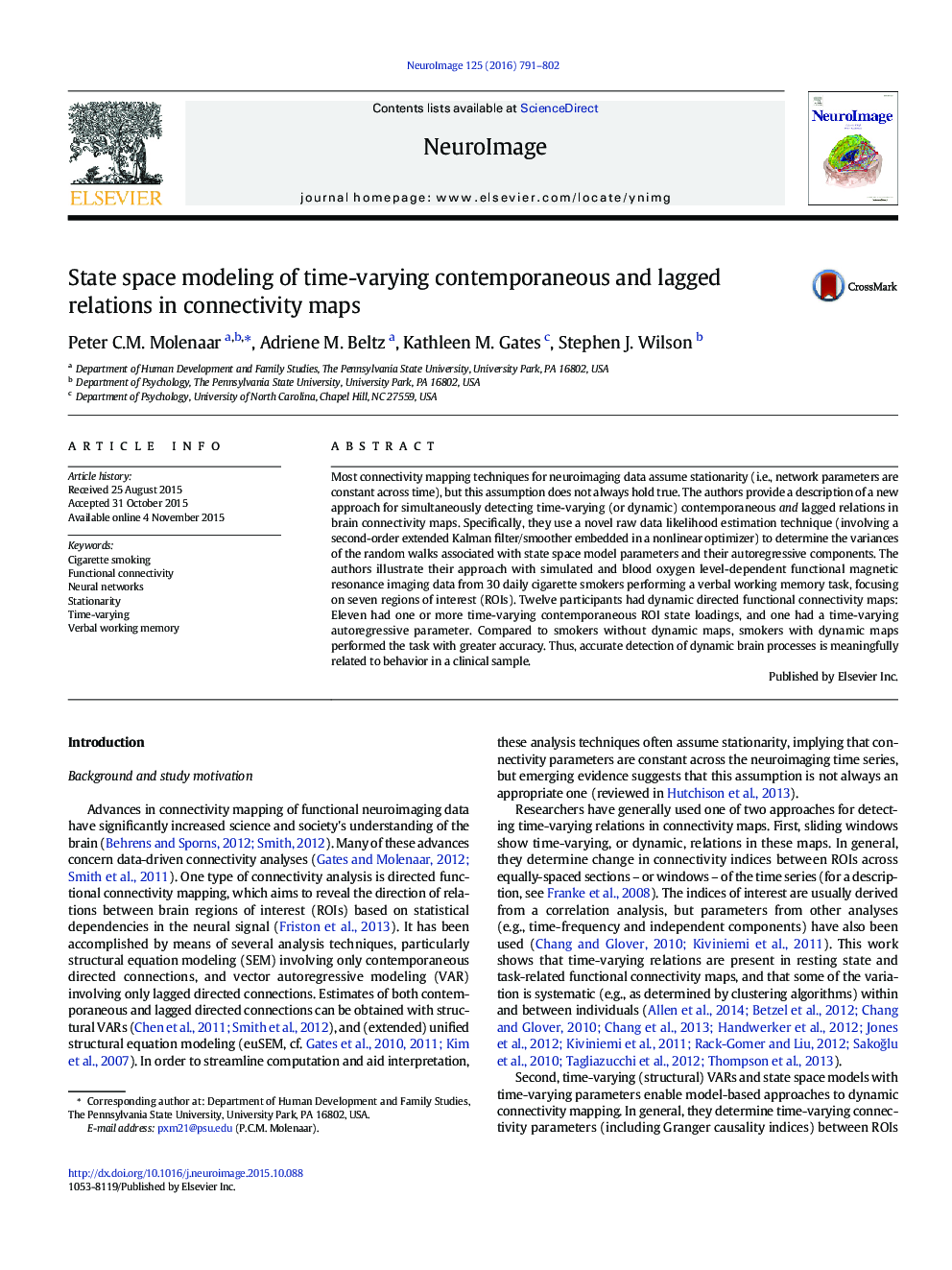| Article ID | Journal | Published Year | Pages | File Type |
|---|---|---|---|---|
| 6024179 | NeuroImage | 2016 | 12 Pages |
Abstract
Most connectivity mapping techniques for neuroimaging data assume stationarity (i.e., network parameters are constant across time), but this assumption does not always hold true. The authors provide a description of a new approach for simultaneously detecting time-varying (or dynamic) contemporaneous and lagged relations in brain connectivity maps. Specifically, they use a novel raw data likelihood estimation technique (involving a second-order extended Kalman filter/smoother embedded in a nonlinear optimizer) to determine the variances of the random walks associated with state space model parameters and their autoregressive components. The authors illustrate their approach with simulated and blood oxygen level-dependent functional magnetic resonance imaging data from 30 daily cigarette smokers performing a verbal working memory task, focusing on seven regions of interest (ROIs). Twelve participants had dynamic directed functional connectivity maps: Eleven had one or more time-varying contemporaneous ROI state loadings, and one had a time-varying autoregressive parameter. Compared to smokers without dynamic maps, smokers with dynamic maps performed the task with greater accuracy. Thus, accurate detection of dynamic brain processes is meaningfully related to behavior in a clinical sample.
Keywords
Related Topics
Life Sciences
Neuroscience
Cognitive Neuroscience
Authors
Peter C.M. Molenaar, Adriene M. Beltz, Kathleen M. Gates, Stephen J. Wilson,
